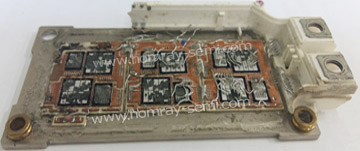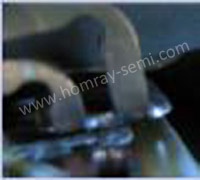

SiC Module Common Technical Difficulty I :
* The current of SiC MOS IC is limited, multi-IC in parallel is the inevitable choice.
* High current IC with high temperature resulted in malfunction and short module life-time. It limits spec of the current for the module.
* Influenced by the IC characteristics and structure layout, unbalanced current exists in parallel multi-IC .


Homray Semiconductor Solution:
* IC paired design and paired configuration.
* The circuit structure is symmetrical in layout.
* Each IC is serially connected to the gate resistance.


SiC Module Common Technical Difficulty II :
*Drive terminal buffer structure and structure design, prevent terminal fracture,avoiding stress concentration.
*The welding material and process of the terminal are improper, easy to cause tin cream overflow and affect the buffer effects.
*Drive terminal buffer structure is improper, easy to cause the breakage.


Homray Semiconductor Solution:
* Terminal structure optimization.
* Welding process adjusting and optimization.
* Welding JIG/Fixture optimization.

SiC Module Common Technical Difficulty III:
* The CTE of SiC IC does not match the Al wire, it easily peel off.
* The size of SiC is becoming smaller, it with the limited wire bonding leads easy to cause the limited through-current capability.
* Conventional Al wire’s CTE does not match that of SiC IC, it has the weak through-current capability and short circuit capacity is poor.



Homray Semiconductor Solution:
*The surface of IC is sintered with copper foil and wire bonding with Cu wire so as to enhancing the through-current capability.
* Enhancing the short circuit capability.


SiC Module Common Technical Difficulty IV:
*Al wire has the poor anti-vibration, easy to break at bottom of bonding area.
*Al wire has the high resistivity and with the poor through-current capability.

Homray Semiconductor Solution:
* The terminal and DBC wire bonding with Cu wire.
* The DBC and DBC wire bonding with Cu wire.


 E-mail:
E-mail: